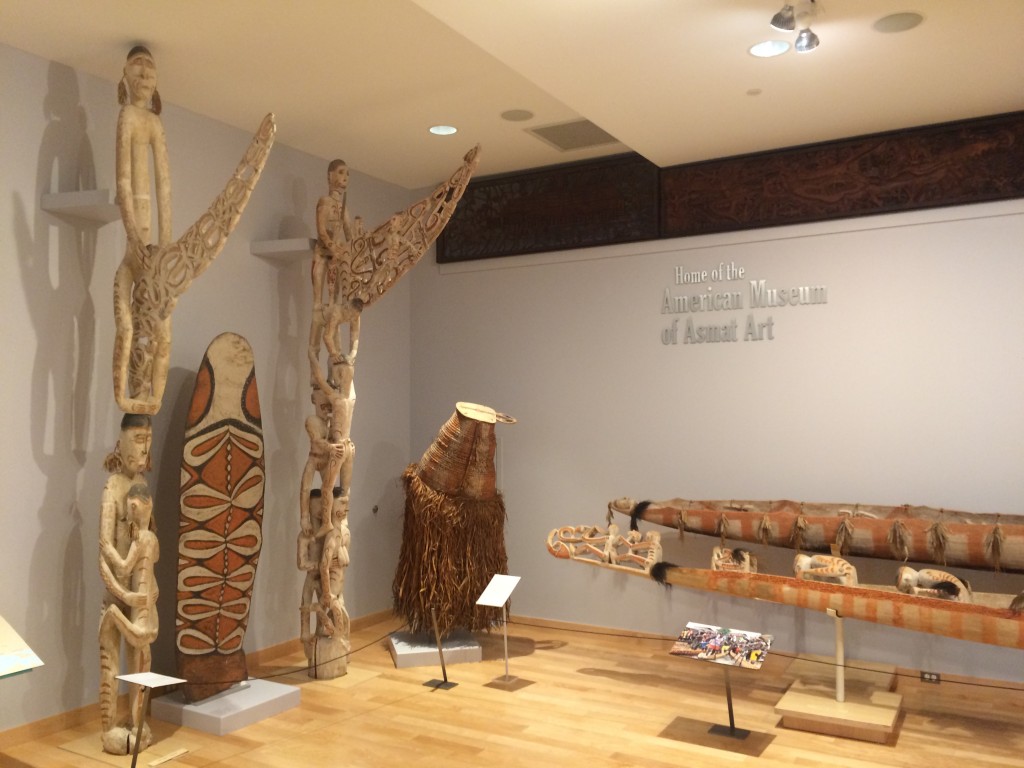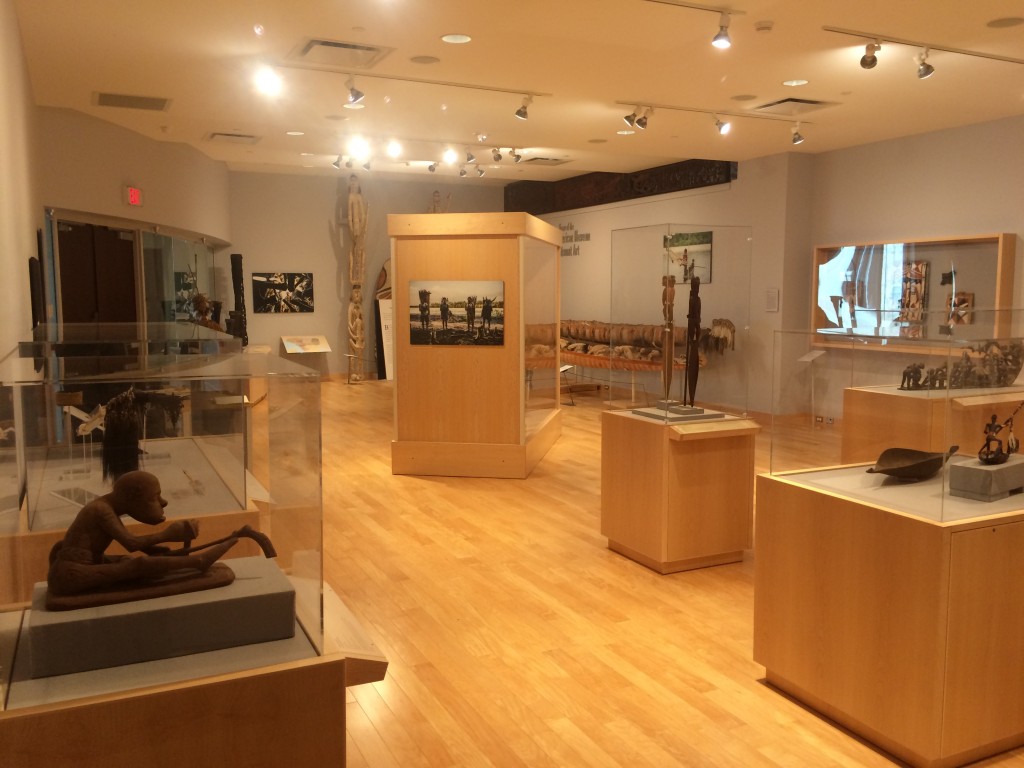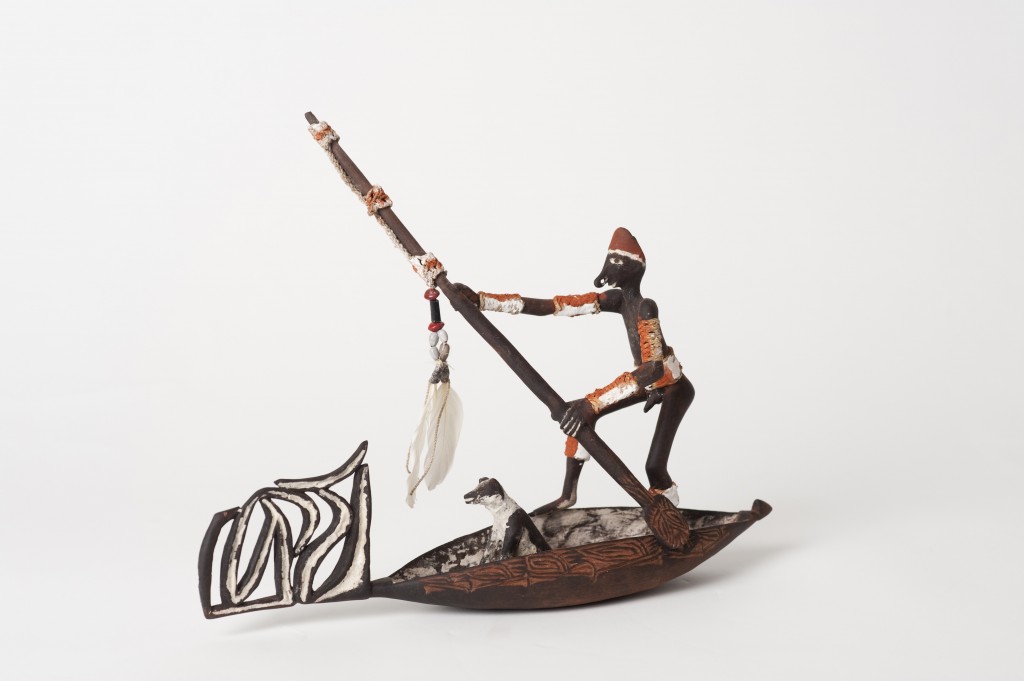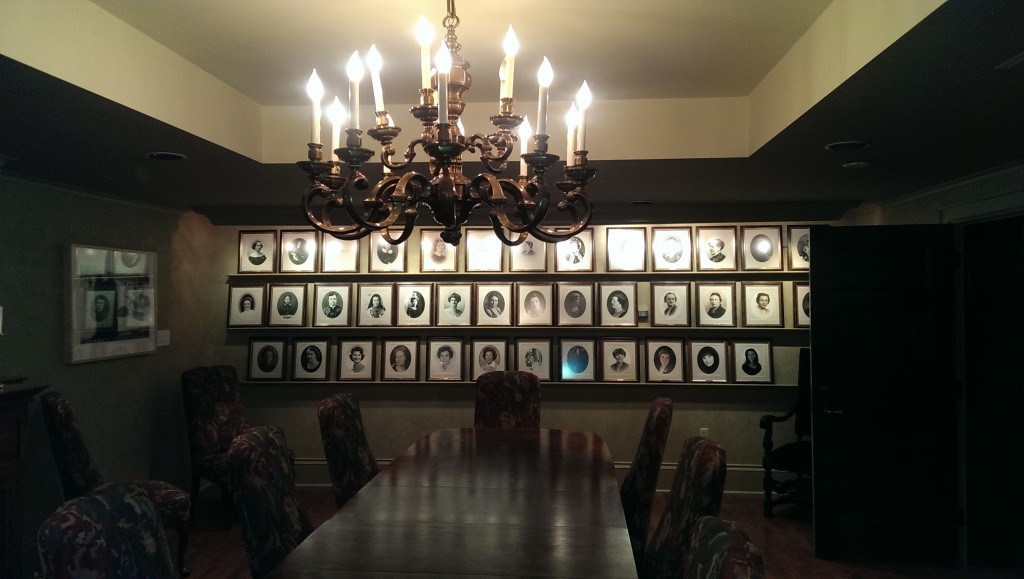In honor of National Museum Day on September 27, I felt it would be appropriate to highlight St. Thomas’ own museum – the American Museum of Asmat Art (AMAA). The AMAA is dedicated to the art and culture of the Asmat people, who live on the southwest coast of the island of New Guinea, which is directly north of Australia in the southwest Pacific Ocean. With more than 2000 works, the AMAA has the largest collection of Asmat art in the country. –Dr. Eric Kjellgren, Clinical Faculty in Art History and Director, American Museum of Asmat Art
The Asmat people have long been renowned as among the finest and most prolific wood sculptors in the Pacific Islands. In addition to wood, Asmat artists work in a rich variety of other materials, including fiber, feathers, bone, and shell, drawn from the rivers on whose banks they live and the tropical rainforests that surround their villages.
Much of Asmat sculpture, like the towering ancestor poles (bis) and soul canoe (wuramon) on view in the Gallery in the Anderson Student Center, was originally created for use in religious ceremonies. Many of these rites, in whole or in part, honored individuals in the community who had recently died and helped to send their spirits onward to safan, the land of the ancestors. Today, contemporary Asmat artists also create innovative forms of sculpture and other works for the global art market.
Man and Dog in a Canoe, 2009, Adam Saimas, Asmat people, Bismam region, Syuru village
Missionaries from the Crosier Fathers and Brothers, a Catholic religious Order, who worked in the Asmat region beginning in 1958, originally formed the AMAA’s collection. The museum had two previous homes in Hastings, Nebraska and Shoreview, Minnesota. In 2007, the Crosiers, wishing to place the collection in a setting where it would be used to educate students and the public about Asmat art and culture, gave it to the University of St. Thomas. The Gallery, located in the Anderson Student Center, opened in 2012 and presents items from the collection that are reflective of different aspects of Asmat art and culture. Today, the collection continues to grow and the AMAA forms an integral part of the university’s broader commitment to fostering respect and appreciation for cultural diversity and the artistic achievements of all of humanity and of the Department of Art History’s dedication to teaching global arts in context. The exhibitions regularly changed throughout the year, so be sure to check back often to experience new works from the AMAA collection.
The Gallery Hours
Monday-Wednesday: 10 am – 4 pm
Thursday: 10 am – 8 pm
Friday: 10 am – 2 pm
Saturday and Sunday: Noon – 4 pm
Please visit the AMAA website for more information.




